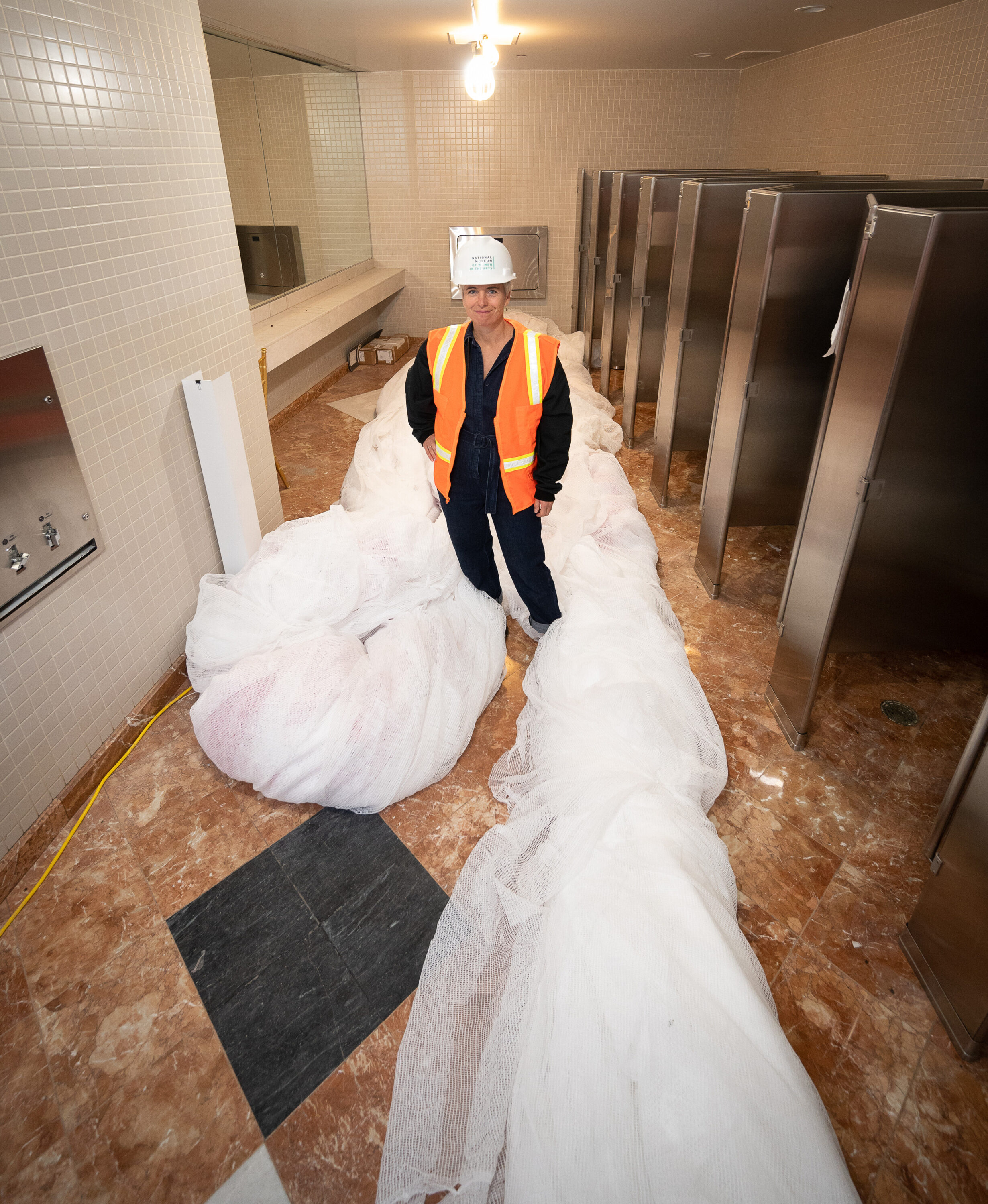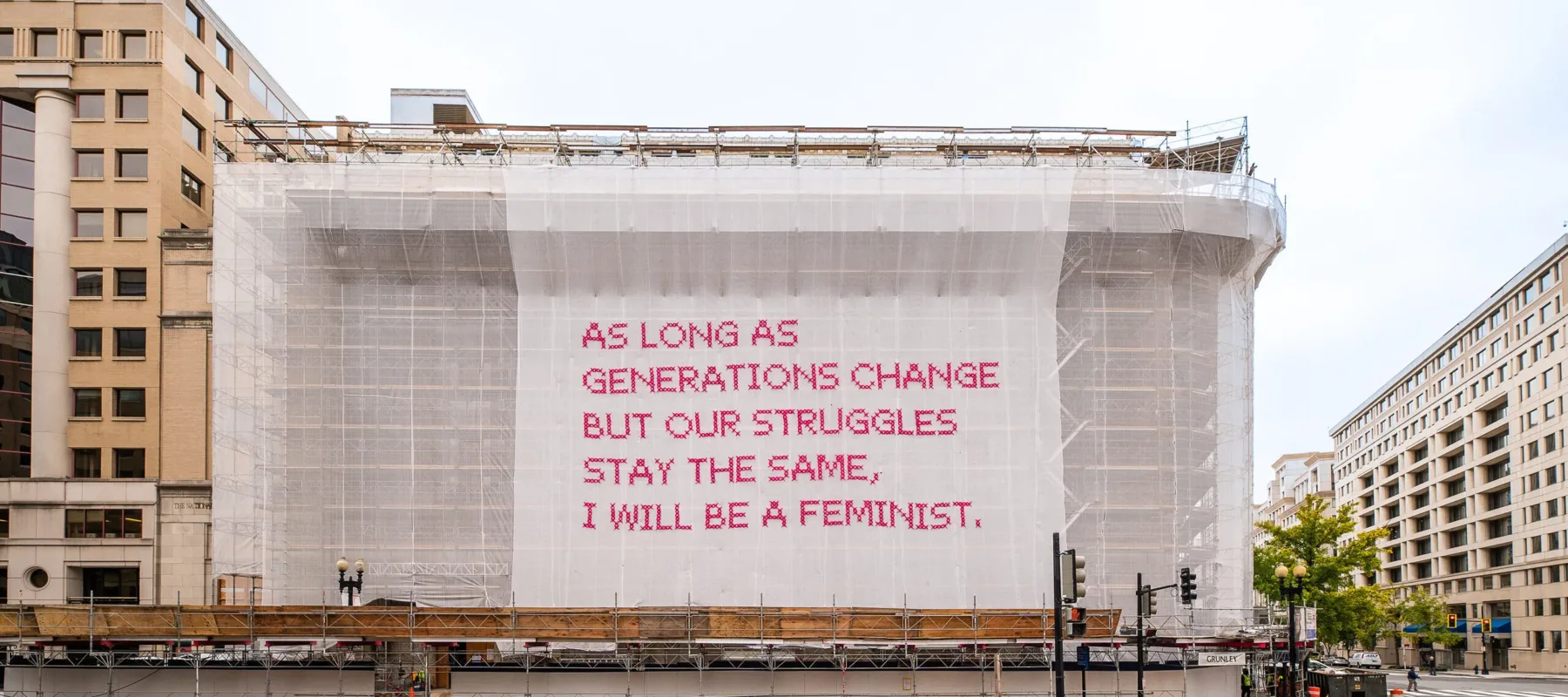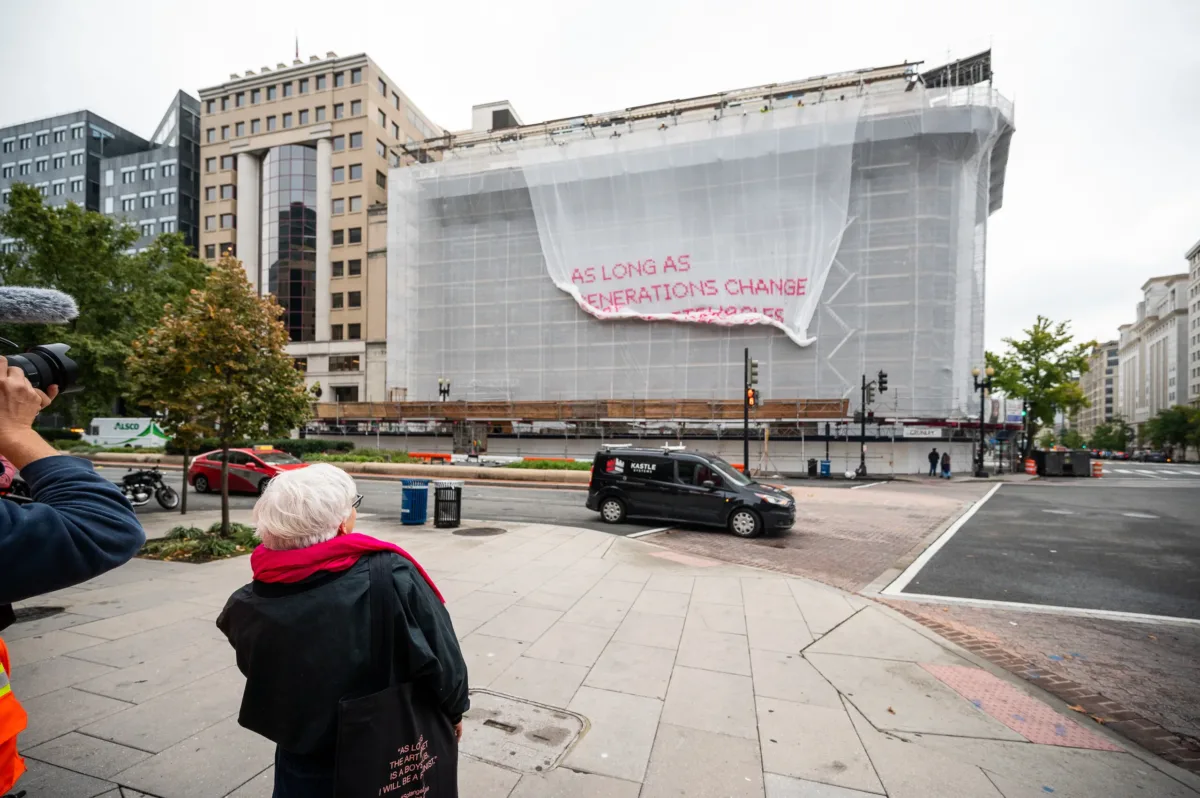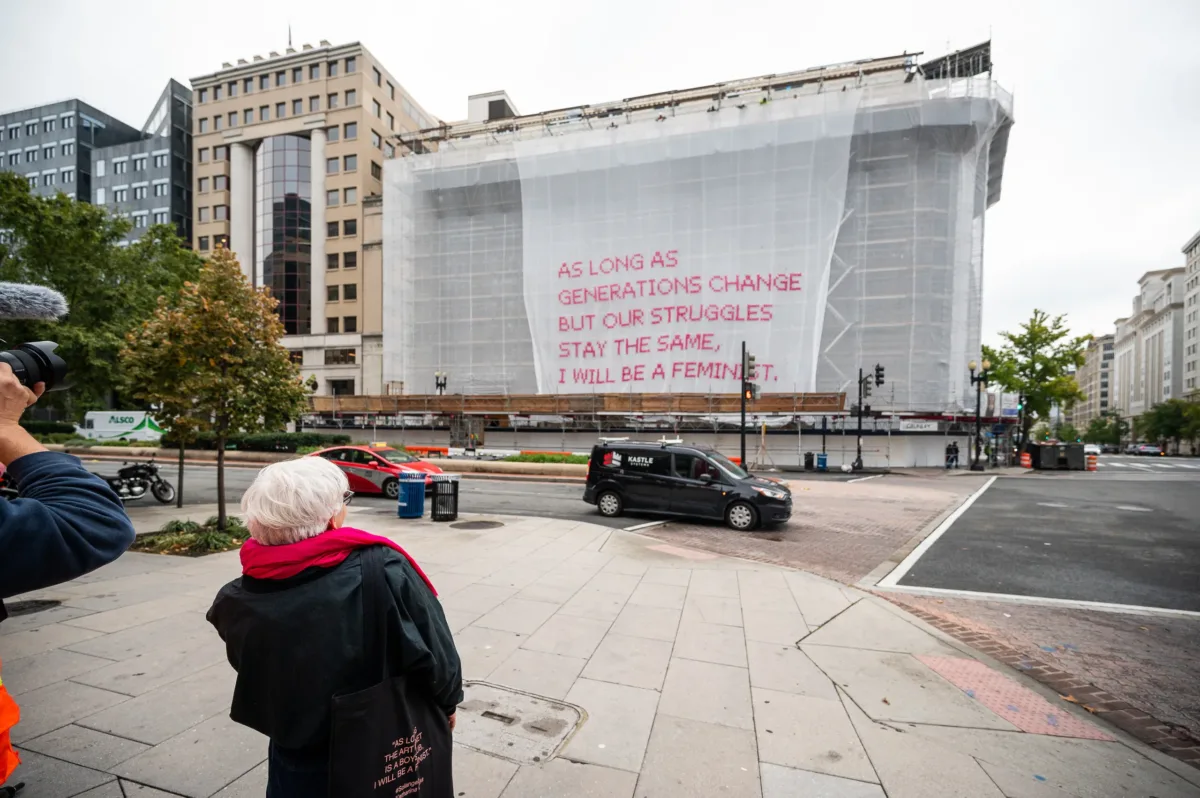With her team, Austrian artist Katharina Cibulka developed the series “SOLANGE” (German for “as long as”) and created a large-scale work now on view on the museum’s façade that reads, “As long as generations change but our struggles stay the same, I will be a feminist.” In this series, monumental nets are cross-stitched with tulle and cable ties on construction scaffolding. Their messages raise awareness and voice the continued need for feminist action.
NMWA Exhibition Coordinator Hannah Shambroom spoke with Cibulka about her process.
Hannah Shambroom: The creation of each “SOLANGE” work begins long before the final phrase is installed on the scaffolding. Could you describe the process that goes into creating each work?
Katharina Cibulka: Finding the right construction site is the most time-consuming part of the process. We need courageous and visionary partners who share our dream of an equal, fair future and are ready to stand up for it.
Once we’ve found a construction site, we explore the issues that are important to the communities that live, work, and move around the site. We conduct surveys and interviews in the communities, read and learn as much as possible about the culture and history of each place. We receive lots of sentences from community members and usually they focus on two or three specific themes, which we then start working on in our team.

I visualize the sentence and plot the stitching template, which depends on the size of the nets. It’s amazing to see the mass of material and stitching. We’re talking about 2,000 to 7,500 square feet of netting, after all! The final step is the installation and the big reveal. The phrase remains secret until this point—my friends keep trying to find out what it is, but we don’t say a word.
HS: What are some of the challenges you’ve faced while working on construction sites? Have there been any unexpected joys to working in these spaces?
KC: There are usually a lot of challenges in store for us, invisible hurdles that pop up along the way. After all, we work on construction sites in the building industry, which is very much male-dominated. We insert ourselves into this sphere and suddenly work on equal footing with the guys. We need to overcome every obstacle, one after the other, step by step. This requires a lot of open communication and discussion, a lot of back and forth, a lot of asserting ourselves, and also a lot of compromise and giving in. It’s all part of the process.
The greatest joy is definitely when we mount and reveal a new net. It feels like a miracle every time! It is truly uplifting to see a feminist phrase in public space, hand-embroidered, huge. To hear people discuss the phrase and its implications, to observe different opinions come apart and then together again—that’s the reward.
It is our mission to raise awareness and draw attention to injustices.



